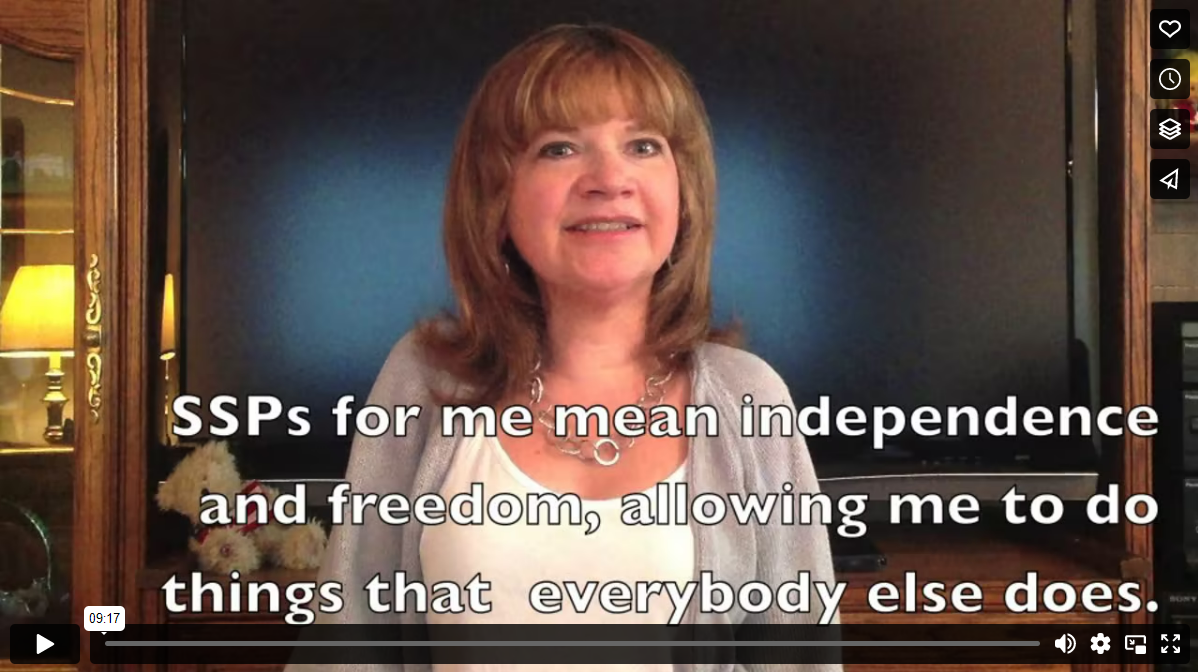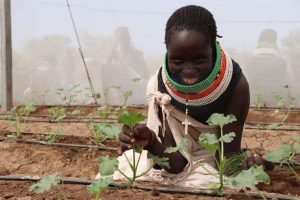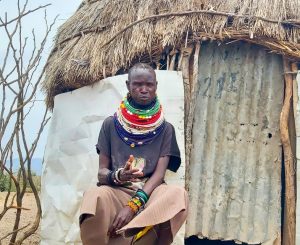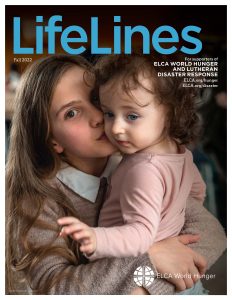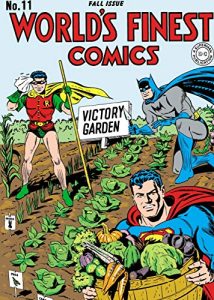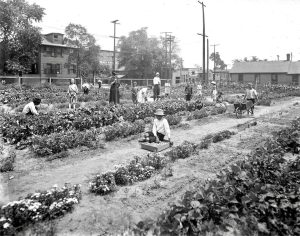
Session 4 — Psalm 23
‘“You prepare a table before me.” —Psalm 23:5
The community of Cataño, Puerto Rico, is vibrant, with residents talented in music, art and sports, yet it also faces a number of challenges. According to the U.S. Census Bureau, the median household income is about $18,600, nearly 12% lower than the average in Puerto Rico. Forty-six percent of people in Cataño live in poverty. So when Hurricane Maria passed through, the devastation compounded ongoing challenges and added new ones. Leaders of Tu Puedes, a project based at Iglesia Evangélica Luterana del Divino Salvador, recognized the increased need and responded by providing both community support for sustainable livelihoods and counseling for mental and emotional wellness. This support was crucial after the hurricane because many residents of Cataño faced the frustration and grief of life after a disaster.
To aid the community, Tu Puedes organized a support group for people who serve as caregivers to family members with Alzheimer’s disease. Providing care for a loved one is taxing work — physically, financially, mentally and emotionally. In the support group, caregivers found a safe, supportive place to voice their emotions and share experiences with others who understand what they are going through. The support group helped to create a community where the caregivers could learn from each other, be present with one another and be heard. Tu Puedes also offered relaxation workshops for caregivers and their loved ones and financial support following Hurricane Maria.
By working with community members, Tu Puedes is helping to create tables — safe spaces of welcome and support — for neighbors. These tables are central to the work of ELCA World Hunger because hunger is about not only the food we eat but also the tables at which we are welcome. The psalm for this week in Lent, Psalm 23, is one of the most familiar passages in the Bible. Its rich language offers a variety of metaphors for understanding God. Most popular, perhaps, is the first, that of the “shepherd” who provides secure rest in “green pastures” (verse 1-2). The most vivid, though, is the image of God as the perfect host, who “prepares a table before me in the presence of my enemies,” with cups overflowing (verse 5). As a gracious host, God even anoints the guest with oil, a symbol of welcome and respect at ancient banquets. Even when surrounded by enemies, the psalmist experiences the abundant welcome of God, the perfect host, to a banquet table where the psalmist will be treated as an honored guest.
Being invited to the table symbolizes more than just being fed. In both Old Testament and New Testament times, to have a place at the table was to be welcomed, to be treated with respect. At banquets, specific rules governed who was invited to recline by the table and join in the meal with the host. We see this over and over again in the gospels, especially in parables that involve banquets. We also see the rigidity of these rules in the accusations leveled against Jesus for dining with people who would otherwise have been deemed unclean or unwelcome.
For the ancients as, indeed, for us, to be fed is one thing but to be welcome at the table is another.
How often in our communities do we find tables that are more exclusive than inclusive, more threatening than welcoming? Perhaps these are not dining tables but other gathering places that reflect society’s perspective on who is truly welcome and who is not. We can easily find roundtables filled with experts who talk about communities but rarely with them. Or we might find tables where the wealthy and powerful network with political decision-makers as few of us will ever be able to do. Tables are places at which relationships are built and decisions are made. When inclusive, they can be safe spaces for communities to come together. When exclusive, they can reinforce the discriminatory and stigmatizing practices that keep us apart.
Indeed, at the very heart of who we are as church stands a table: the table of Holy Communion. Martin Luther referred to Holy Communion as a “sacrament of love.” In dining at this table, he wrote, we remember our neediness before God, recall those not present at the table and commit ourselves to “tak[ing] to heart the infirmities and needs of others, as if they were [our] own.” To be at this table is to be formed by the sacrament of Holy Communion. To be the people of God is to be formed by a table where all are welcome and all are fed.
Of course, our calling goes beyond this. Worship and the sacraments take their most authentic form when they carry us back into the world, prepared not just to dine at the table but to be that table — that community of welcome, of hospitality, of safety and grace with and for our neighbors. This is a lofty goal that we aim for as church together. Ending hunger will take more than calories, water wells or sustainable jobs. It will take tables — inclusive spaces that bear witness to a new kind of community, where new relationships are formed, where each guest is welcomed and valued, and where every cup overflows with all that is made possible when God draws us together.
REFLECTION QUESTIONS
Think of a time when you were welcomed to a table — perhaps to dine, to communicate or to share your ideas. What did the experience feel like?
How does your congregation invite and create a hospitable place for new people at “the table” when decisions are made and visions for the future are shared?
How can creating safe spaces, such as the Tu Puedes support groups, contribute to ending hunger?
What other metaphors for God can be found in Psalm 23? How might these metaphors shape new ways of understanding the work of the church?

Sesión 4 — Salmo 23
“Dispones ante mí un banquete” — Salmo 23:5
La comunidad de Cataño, Puerto Rico, es vibrante, con residentes talentosos en música, arte y deportes, pero también enfrenta una serie de retos. Según la Oficina del Censo de los Estados Unidos, el ingreso familiar promedio es de aproximadamente $ 18,600, casi un 12% más bajo que el promedio de Puerto Rico. El cuarenta y seis por ciento de los habitantes de Cataño vive en la pobreza. Entonces, cuando el huracán María pasó por ahí, la devastación agravó los retos que ya había y agregó unos nuevos. Los líderes de Tú Puedes, un proyecto con sede en la Iglesia Evangélica Luterana del Divino Salvador, reconocieron que las necesidades aumentaron, y respondieron a estas brindando apoyo comunitario para medios de vida sostenibles y consejería para el bienestar mental y emocional. Este apoyo fue crucial después del huracán porque muchos residentes de Cataño enfrentaban la frustración y el dolor de la vida después de un desastre.
Para ayudar a la comunidad, Tú Puedes organizó un grupo de apoyo para personas que sirven como cuidadores de familiares que padecen de la enfermedad de Alzheimer. El cuidado de un ser querido es un trabajo agotador —física, financiera, mental y emocionalmente. En el grupo de apoyo, los cuidadores encontraron un lugar seguro y solidario en el cual expresar sus emociones y compartir experiencias con otras personas que entienden lo que ellos están atravesando. El grupo de apoyo ayudó a crear una comunidad en la cual los cuidadores podían aprender unos de otros, estar presentes unos con otros y ser escuchados. Tú Puedes también ofreció talleres de relajación para cuidadores y sus seres queridos, y apoyo financiero después del huracán María.
Al trabajar con miembros de la comunidad, Tú Puedes está ayudando a crear mesas —espacios seguros de acogida y apoyo— para los vecinos. Estas mesas son fundamentales para el trabajo de ELCA World Hunger, porque el hambre no solo se trata de los alimentos que comemos, sino también de las mesas en las que somos bienvenidos. El salmo de esta semana de Cuaresma, el Salmo 23, es uno de los pasajes más conocidos de la Biblia. Su rico lenguaje ofrece una variedad de metáforas que ayudan a entender a Dios. La más popular, quizás, es la primera, la del “pastor” que da un descanso seguro en “verdes pastos” (versículos 1-2). La más vívida, sin embargo, es la imagen de Dios como el anfitrión perfecto, que “dispone ante mí un banquete en presencia de mis enemigos”, con copas rebosantes (versículo 5). Como amable anfitrión, Dios incluso unge al invitado con perfume, lo que era un símbolo de bienvenida y respeto en los banquetes antiguos. Incluso cuando está rodeado de enemigos, el salmista experimenta la abundante acogida de Dios, el anfitrión perfecto, a una mesa de banquete donde el salmista será tratado como un invitado de honor.
Ser invitado a la mesa simboliza más que simplemente ser alimentado. Tanto en el Antiguo Testamento como en los tiempos del Nuevo Testamento, tener un lugar en la mesa era ser bienvenido, ser tratado con respeto. En los banquetes, reglas específicas determinaban quién era invitado a reclinarse junto a la mesa y comer con el anfitrión. Vemos esto en los evangelios una y otra vez, especialmente en las parábolas que hablan de banquetes. También vemos la rigidez de estas reglas en las acusaciones que se le hicieron a Jesús por cenar con personas que de otro modo habrían sido consideradas impuras o no bienvenidas. Tanto para los antiguos como para nosotros, en efecto, ser alimentados es una cosa, pero ser bienvenido en la mesa es otra.
¿Con qué frecuencia en nuestras comunidades encontramos mesas que son más exclusivas que inclusivas, más amenazantes que acogedoras? Tal vez estas no son mesas de comedor, sino otros lugares de reunión que reflejan la perspectiva de la sociedad en cuanto a quién es realmente bienvenido y quién no. Podemos encontrar fácilmente mesas redondas llenas de expertos que hablan de comunidades, pero rara vez con ellas. O podemos encontrar mesas donde los ricos y poderosos se relacionan con quienes toman decisiones políticas como pocos de nosotros podremos alguna vez hacerlo. Las mesas son lugares en los que se construyen relaciones y se toman decisiones. Cuando son inclusivas, pueden ser espacios seguros para que las comunidades se unan. Cuando son excluyentes, pueden reforzar las prácticas discriminatorias y estigmatizantes que nos mantienen separados.
De hecho, en el centro mismo de lo que somos como iglesia se encuentra una mesa: la mesa de la Santa Comunión. Martín Lutero se refirió a la Santa Comunión como un “sacramento de amor”. Al cenar en esta mesa, escribió él, recordamos nuestra necesidad ante Dios, recordamos a los que no están presentes en la mesa y nos comprometemos a “tomar en serio las enfermedades y necesidades de los demás como si fueran las nuestras”. Estar en esta mesa es ser formado por el sacramento de la Santa Comunión. Ser el pueblo de Dios es ser formado por una mesa donde todos son bienvenidos y todos son alimentados.
Por supuesto, nuestro llamado se extiende más allá de esto. La adoración y los sacramentos toman su forma más auténtica cuando nos llevan de vuelta al mundo, preparados no solo para cenar en la mesa, sino para ser esa mesa —esa comunidad de acogida, de hospitalidad, de seguridad y gracia con nuestros vecinos y para ellos. Esta es una meta elevada a la que aspiramos juntos como iglesia. Acabar con el hambre requerirá más que calorías, pozos de agua o empleos sostenibles. Se necesitarán mesas —espacios inclusivos que den testimonio de un nuevo tipo de comunidad, donde se formen nuevas relaciones, donde cada invitado sea bienvenido y valorado, y donde cada copa rebose de todo lo que es posible cuando Dios nos une.
PREGUNTAS DE REFLEXIÓN
Piense en un momento en el que le dieron la bienvenida a una mesa —tal vez para cenar, comunicarse o compartir sus ideas. ¿Cómo se sintió la experiencia?
¿Cómo invita su congregación y crea un lugar hospitalario para nuevas personas en “la mesa” al tomarse decisiones y compartir visiones para el futuro?
¿Cómo puede la creación de espacios seguros, como los grupos de apoyo Tú Puedes, contribuir a acabar con el hambre?
¿Qué otras metáforas de Dios se pueden encontrar en el Salmo 23? ¿Cómo podrían estas metáforas moldear nuevas formas de entender la obra de la iglesia?



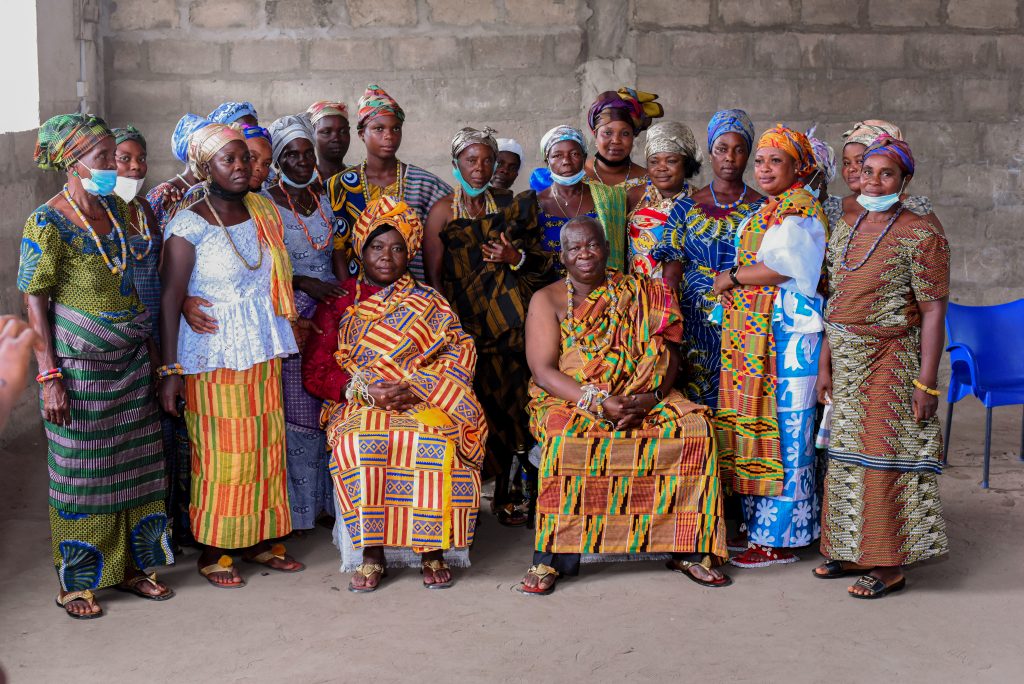
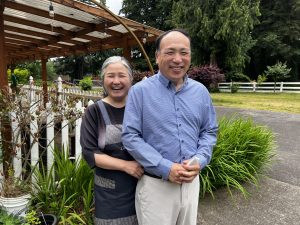 With a grant from ELCA World Hunger, Light of Grace started a new program through Dasom Bi-Cultural Cooperation to provide space and support for fellow Korean-American immigrants three days a week. Tuesday through Thursday, program participants have an opportunity to cook Korean food, eat a healthy meal, create goods to sell or keep, and take advantage of interpretation services, social engagement and emotional support.
With a grant from ELCA World Hunger, Light of Grace started a new program through Dasom Bi-Cultural Cooperation to provide space and support for fellow Korean-American immigrants three days a week. Tuesday through Thursday, program participants have an opportunity to cook Korean food, eat a healthy meal, create goods to sell or keep, and take advantage of interpretation services, social engagement and emotional support.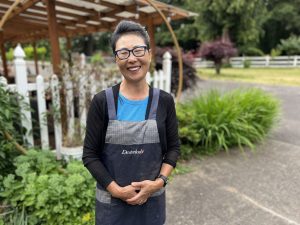 “I always had heard that the Lutherans excel at helping churches in need, but after having experienced it firsthand, I’m just really so happy and proud to be a member of this church.”
“I always had heard that the Lutherans excel at helping churches in need, but after having experienced it firsthand, I’m just really so happy and proud to be a member of this church.”

